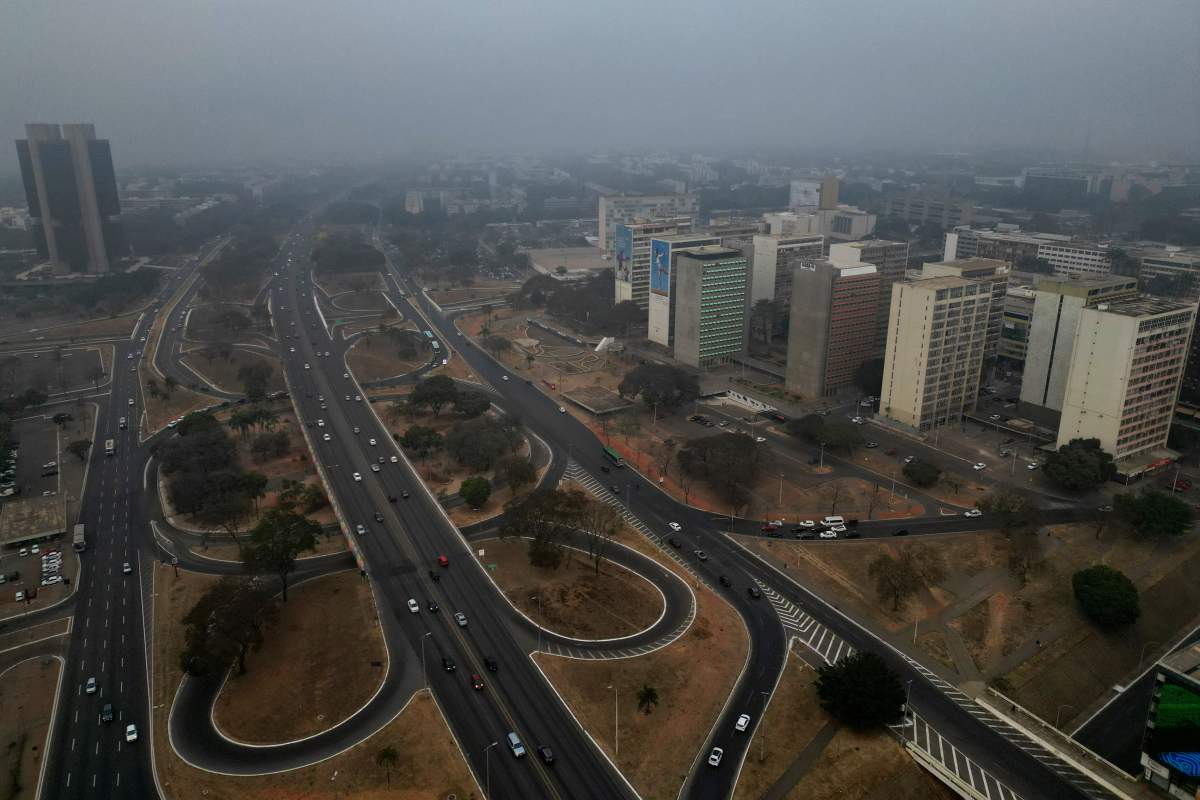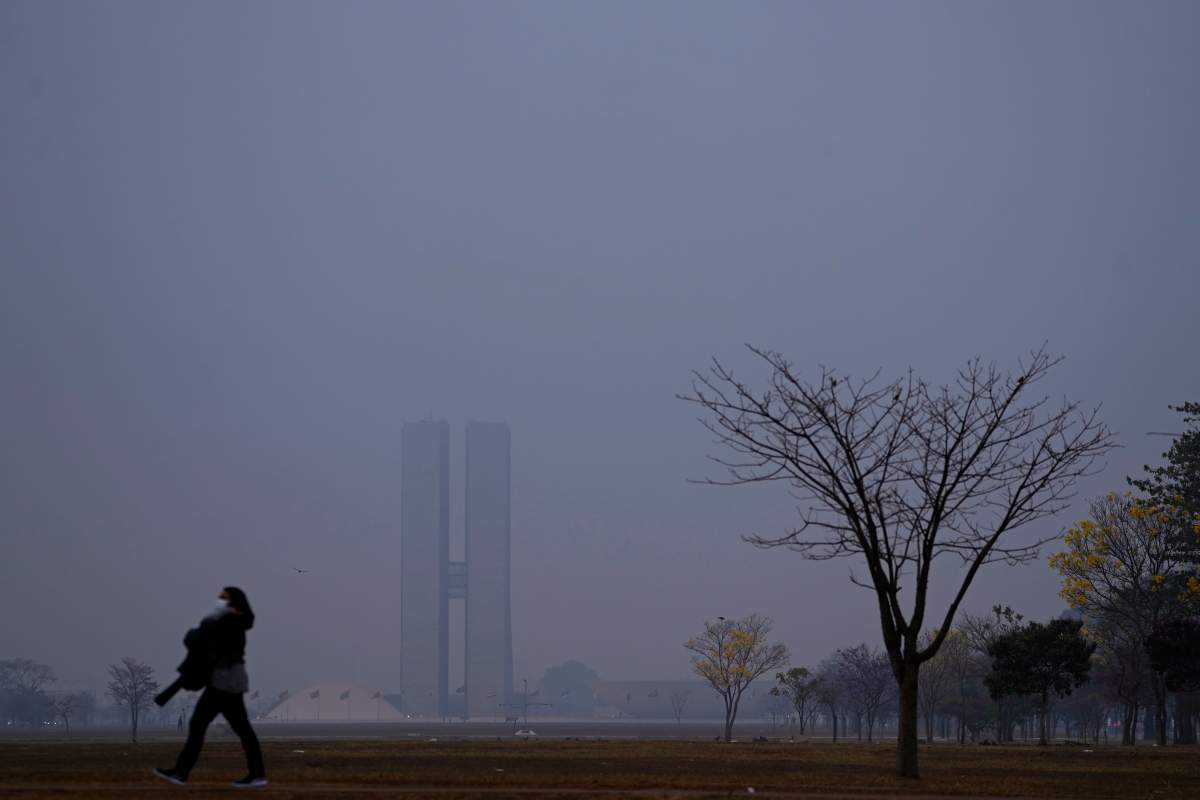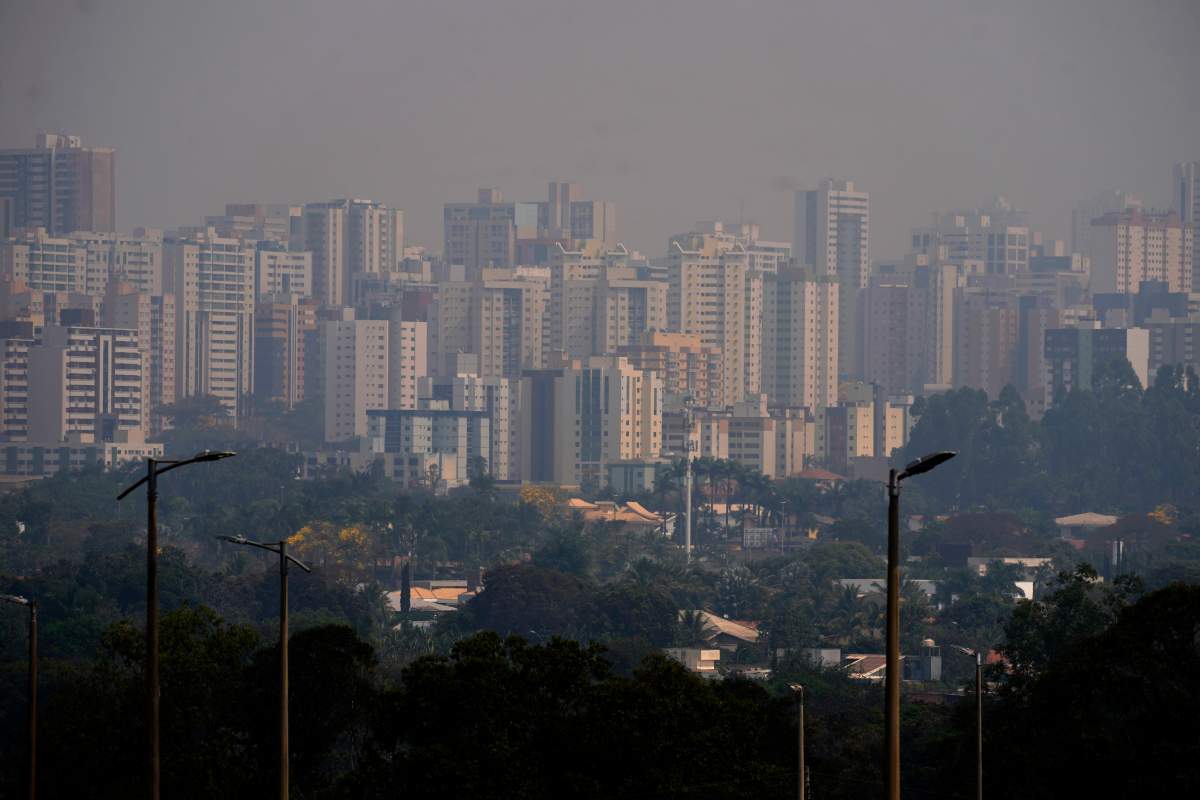Brasilia, Brazil’s modernist capital, woke up the last two days to find its iconic buildings enveloped in smoky air. The central part of the country is just the latest region affected by smoke from fires in the Amazon rainforest, Cerrado savannah, the Pantanal wetland and the state of Sao Paulo.

The smog crisis prompted President Luiz Inácio Lula da Silva to visit Brazil’s national fire monitoring center in Brasilia on Sunday afternoon. “No fires caused by lightning were detected. This means that people are setting fires in the Amazon, the Pantanal, and especially in the state of Sao Paulo,” he said. His government pledged to step up firefighting and investigations to identify the culprits.
Fire alerts so far this month total almost 3,500 in southeastern Sao Paulo state — the most registered in any month since data collection began in 1998. Over half those fires occurred on Aug. 23, raising the suspicion of a coordinated attack. The smog caused 48 cities to declare a red alert. The good news was that a cold front Monday brought declining temperatures and rain, extinguishing all fires, the state government said.
In Brasilia, the air quality index reached a very unhealthy level on Sunday night, according to Brasilia’s environment institute. This is the first time the state agency has recorded a smog alert since its creation in 2007. Public events were canceled, and the airport of the nearby city of Goiania was closed for a few hours.
Amazon cities such as Manaus, Porto Velho and Rio Branco have been choking on smoke for several weeks but have received less official and media attention. This is partly because it´s an annual occurrence.
“It took the smoke and soot from the Amazon and the Cerrado invading the halls of the presidential palace for the federal government to wake up,” Altino Machado, a journalist based in Rio Branco who has been writing about the environment for four decades, told The Associated Press.

Get daily National news
In the state of Sao Paulo, two employees working at an industrial plant died Friday while trying to fight back a fire. Additionally, a total of 59,000 hectares (146,000 acres) of sugar cane plantations were destroyed, according to a producers association. In the Amazon, a federal brigade firefighter also died Monday while working in the Capoto Jarina Indigenous Territory.
The smog that covered Sao Paulo state and Brasilia partially originated in the Amazon, Pantanal and Cerrado, according to Karla Longo, a researcher who monitors smoke at the National Institute for Space Research, a federal agency. Longo said changes in climatic conditions are the main reason smoke reached these regions.
During the driest months of August and September, when wildfires and deforestation peak, the smog typically spreads up to 5 million square kilometers (1.9 million square miles), traveling from east to west and then south after hitting the Andean Cordillera. Earlier this month, it reached Rio Grande do Sul, Brazil’s southernmost state.

However, the arrival of a cold front displaced the smog toward Sao Paulo state, which was already experiencing a record number of fires, and then spread to Brasilia’s region, Longo said.
The researcher also said the number of Brazil’s wildfires this year is not outside the norm. However, she noted that burned areas are larger than average. From January through July, an area the size of Italy had burned — 64% larger than the same period last year, according to official data. Fires are traditionally used as the last procedure for deforestation and for managing pasture.
Almost half of Brazil’s carbon emissions come from deforestation. The country is the world’s fifth-largest emitter of greenhouse gases, with almost 3% of global emissions, according to Climate Watch, an online platform managed by World Resources Institute.
AP writer David Biller in Rio de Janeiro contributed to this report.










Comments